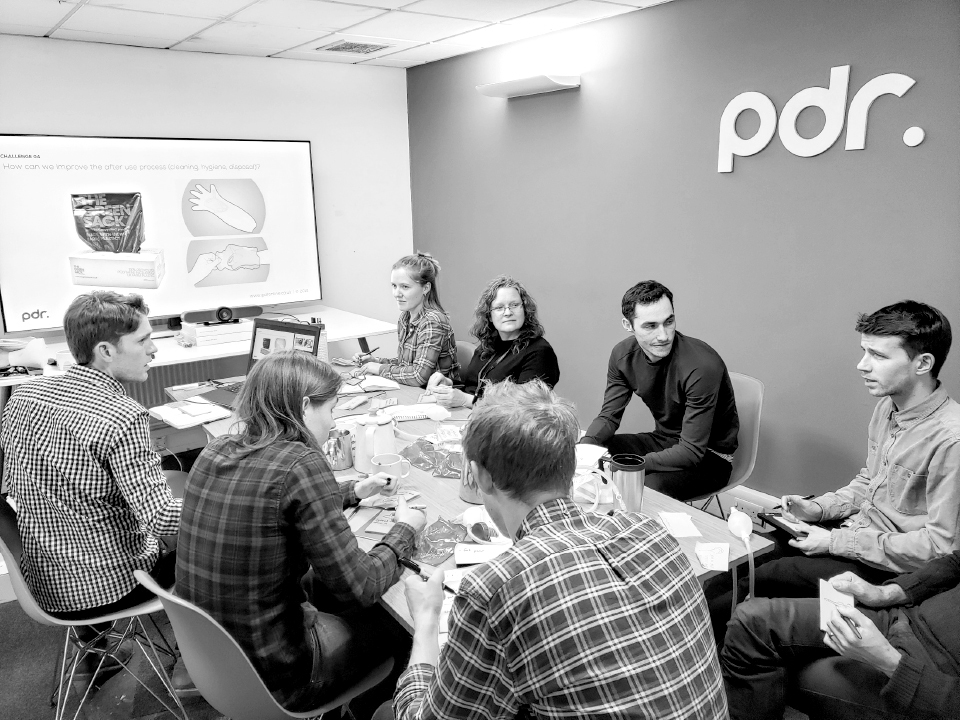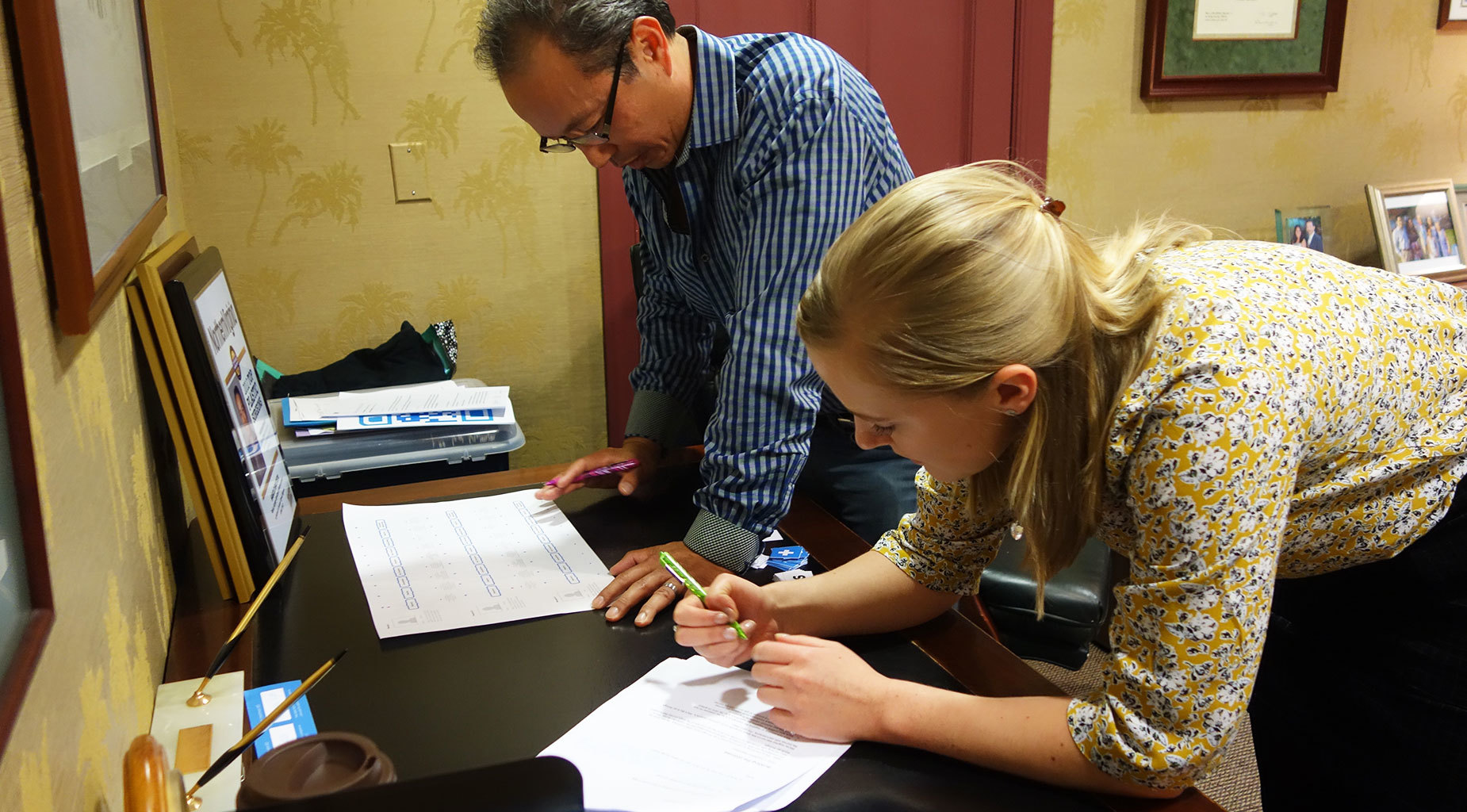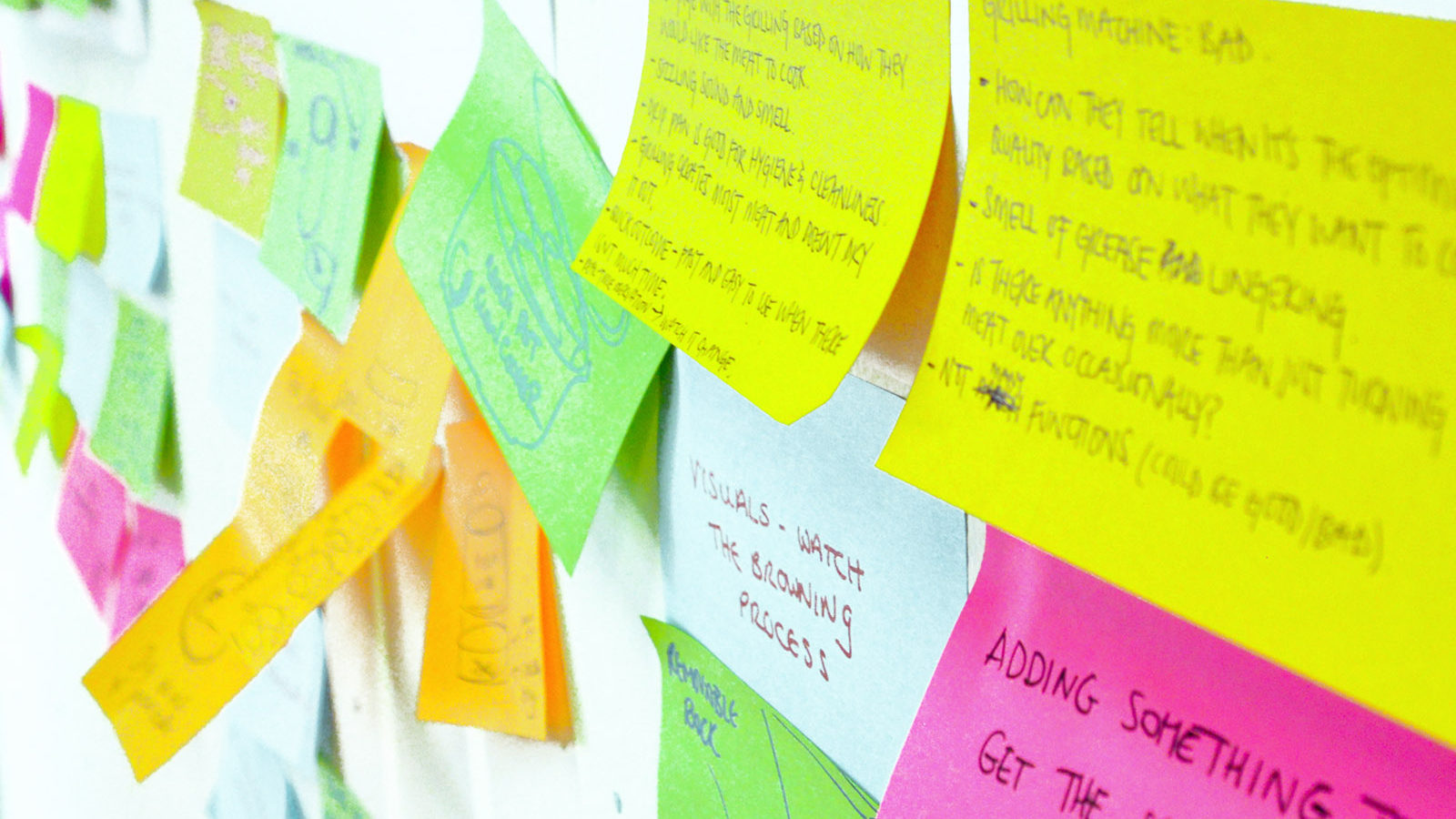Prof. Andrew Walters Publications
PDR Research
- Focus:
- User Centred Design
Uncovering self-management needs to better design for people living with lymphoedema
Kopanoglu,Teksin, Beverley, Katie, Eggbeer, Dominic & Walters, Andrew (2019) 'Uncovering self-management needs to better design for people living with lymphoedema', Design for Health, 3 (2), pp. 220-239, DOI: 10.1080/24735132.2019.1686326
This paper reports on the application of design-based tools used to uncover the needs of people living with a chronic condition. It was built on increasing rhetoric calling for greater involvement of patients in the creation of appropriate support mechanisms and presents a means to achieve this using design approaches and tools. The paper presents the development and use of scenario-based design probes to facilitate the participation of People Living with Lymphoedema (PLWL) early in the design process. Lymphoedema is a chronic condition requiring a cumbersome everyday management routine. Self-management is necessary to increase quality of life and decrease complications and hospitalisation. However, consistent practice of self-management among PLWL is low and the need to improve support is recognised. This research explored how PLWL’s transitions towards becoming experts of their condition might be supported. Literature describing the lymphoedema experience was systematically investigated from a behavioural perspective to develop scenario-based probes. These probes provided rich insights by facilitating the envisioning of alternative futures to self-management support with interview participants with lymphoedema. To inform the design of better support for chronic conditions, the stages and components of behaviour change for lymphoedema self-management and the associated support needs are presented.
Find more details here: https://doi.org/10.1080/24735132.2019.1686326
Expert opinion on the barriers to communicating excellent research in commercially driven design projects
Al Batlouni, D.; Walters, A. and Beverley, K., 2019. Expert Opinion on the Barriers to Communicating Excellent Research in Commercially Driven Design Projects. Muratovski, G. & Vogel, c. ed.s Design Discourse on Business and Industry: Re: Research, Volume 6, 5, p.69.
Effective university-industry collaboration has become a major focus for governments in recent years. Universities are increasingly expected to play a greater role in the innovation system and evidence their contribution to economic development. At the same time, the growth in research quality assessment exercises makes it imperative that the excellence of research conducted in commercially driven activities can be appropriately evaluated. This paper explores the challenges of reconciling commercially focused activity and research quality assessment in design. Semi-structured interviews were conducted with thirteen experts including representatives from the design discipline, other applied academic disciplines, research quality assessment leaders and commercial designers. The interviews identified a number of barriers to demonstrating research excellence in commercially driven projects. These were classified as barriers resulting from: the nature of industry-academic relationships; the nature of the project; and the nature of the research quality assessment. It is concluded that there is a need to build a simple, easily usable framework for assessing the research potential of commercially driven design projects from the outset to ensure that the appropriate processes are put in place to communicate research conducted within them.
Find more details here: https://www.intellectbooks.com/design-discourse-on-business-and-industry

Assessing Manufacturing SMEs’ Readiness to Implement Service Design
Teso, G. and Walters, A. (2016) 'Assessing manufacturing SMEs’ readiness to implement service design', Procedia CIRP, 47, pp.90-95. DOI: 10.1016/j.procir.2016.03.063.
This paper presents the initial results of a wider research project that investigates how service design might positively contribute to the development of product-service systems within manufacturing small to medium sized enterprises. The paper presents the results of interviews with three firms that have begun to embrace service design. The analysis of these results is used to produce a conceptual framework with nine dimensions that aims to aid understanding of a company's potential readiness for servitization through service design.
Find more details here: https://doi.org/10.1016/j.procir.2016.03.063
Designing for well-being in late stage dementia
Treadaway, C., Fennell, J., Prytherch, D., Kenning, G.and Walters, A. (2018) ‘Designing for well-being in late stage dementia’ in Coles, R., Costa, S., Watson, S. (Ed.s). Pathways to Well-Being in Design: Examples from the Arts, Humanities and the Built Environment. London: Routledge
The chapter presents insights gained through the process of participatory research to discuss how “Compassionate Design Approaches” are being used to support well-being specifically in relation to dementia. It presents innovation in the field via the LAUGH research project, addressing issues of memory impairment, perceptual and communication difficulties, boredom and social isolation due to the effects of the disease. The chapter includes the theoretical approaches, exploring issues related to procedural memory including, touch, playfulness, craft making, and access to emotional memories. It identifies key themes in relation to subjective well-being, new ways to support well-being providing an exemplar study related to the medical humanities with concepts that inform beyond the specifics of dementia.
Find more details here: https://www.routledge.com/Pathways-to-Well-Being-in-Design-Examples-from-the-Arts-Humanities-and/Coles-Costa-Watson/p/book/9780815346951
Design for social value: using design to improve the impact of CSR
Choi Y., Hoo Na J., Walters A.T., Lam B., Boult J., Jordan P.W. (2018) 'Design for social value: using design to improve the impact of CSR', Journal of Design Research, 16(2):155, doi: 10.1504/JDR.2018.10014196
This paper discusses the meaning of social value from the design perspective, especially in corporate social responsibility practices, and the contextual issues and values derived from design, considering how companies could better use design for social value creation. The research identified consumer attitudes to corporate social value and where companies are perceived to have generated social value, and explored where design has contributed to such social value. The research illustrates that design has great potential to add value to the triple bottom line, mostly related directly to organisations, but also to areas relating to society, including the 'lower levels of environmental degradation' and 'more solutions for social issues', indicating design plays an influential role in creating socially responsible products/services. However, this research suggests that a clear definition of 'social value' from various perspectives and its relationship with CSR is required due to the complex and subjective nature of 'social value'.
Find more details here: http://doi.org/10.1504/JDR.2018.092818

Uncovering Human Needs through Visual Research Methods: Two Commercial Case Studies
Hare, J. D., Beverley, K., Begum, T., Andrews, C., Whicher, A., Walters, A. and Ruff, A. (2018) 'Uncovering human needs through visual research methods: Two commercial case studies', Electronic Journal of Business Research Methods, 16(2), pp.55-102
This paper presents two respective case studies which demonstrate how visual research methods can elicit a deep understanding of the needs of potential end users and drive product and service development at a strategic business level. The engagement of users in the development of products, services and systems has been explored by a number of design disciplines in the last few decades including but not limited to product design, human-computer interaction, systems design and service design. Each has recognised the importance of understanding the humans who will potentially be using their design outcome. Notable research methods include ethnographic inspired research, in-context and lab-based observations, interviews and the user trial of prototypes. However, these approaches also have their critics and limitations ranging from the need for incremental adjustment rather than radical design, being time-consuming and costly processes, and the large volume of ‘messy data’ being collected contributing to the complexities of ‘wicked problems’. In response to some of these limitations, a number of research methods have emerged which are more arts-based in nature i.e. the act of creating allows the researcher to extract ‘deeper’ human needs (tacit and latent needs) in a drastically shorter timescale. To fully utilise such approaches it is essential that a study be designed which amalgamates diverse research methods. The two case studies presented in this paper employ a variety of traditional and generative design research methods in live commercial projects. The specific project outcomes are retained under Intellectual Property and, as such, this paper critically focuses on the value of the process and methods utilised, their relationship to the wider concept of arts-based research, and discusses issues related to their application in commercial work.
Find more details here: https://academic-publishing.org/index.php/ejbrm/article/view/1374
Using an Action Research Approach to Embed Service Design in a Higher Education Institution
Madden, H. and Walters, A.T. (2016) 'Using an action research approach to embed service design in a higher education institution', Swedish Design Research Journal, 14(1), pp.40-50
Design Thinking can address the political and cultural divides in higher education and improve the focus on student experience. The challenge is reshaping a traditional organisation into a more modern one and at the same time creating an environment that is favourable towards change brought about by design-led thinking. In one higher education institute, almost two years into the journey and despite some challenges along the way, Service Design methods are demonstrating their capacity to change the processes and procedures that support the delivery of student services in higher education. An action research approach is currently being used to assess how the tools of Design Thinking are applied to real organisational problems and the consequences of design-led action. This research introduces a new set of tools and techniques to an organisation and analyses the effects of this fresh approach on the organisation via a number of action research cycles. There are many stages on the road to introduce Design Thinking as a bottom-up approach to changing an organisation into a more innovative, progressive, efficient and user-centred one.
Find more details here: https://doi.org/10.3384/svid.2000-964X.16140

Creating a Tool for Measuring the Social Value of Design
Hoo Na, J., Choi, Y., Walters, A., Lam, B. and Green, S. (2017) 'Creating a Tool for Measuring the Social Value of Design', The Design Journal, 20 (sup1), pp.S1662-S1672.
Social value has been measured for many years predominantly for values created by NGOs, social enterprises, social ventures, and social programmes. However, because ‘value’ is a highly subjective concept that often has ‘soft’ outcomes, it is challenging to find a measurement tool which satisfies all parties involved in social value creation, especially in the commercial sector. In this complex environment, a viable means of measuring the social value of design will enable organisations to use design more effectively to increase their societal contribution and competitiveness. This research aims to identify key considerations to produce a guideline which can be used to create desirable tools for measuring social value of design, by conducting in-depth interviews with companies and two workshops with postgraduate students and professionals from a range of backgrounds. It is recommended that the tool should have three levels: (i) an overview with a qualitative approach, (ii) a financial level with a quantitative approach, and (iii) a balanced level with both a qualitative and a quantitative approach.
Find more details here: https://doi.org/10.1080/14606925.2017.1352689
Creating and testing a model-driven framework for accessible user-centric design
Wilkinson, C.R., Walters, A. and Evans, J. (2016) 'Creating and testing a model-driven framework for accessible user-centric design', The Design Journal, 19 (1), pp.69-91
Despite growing interest in user-centred design, there is limited discussion and critique of how to implement such an approach in a commercial design environment. This article examines the approach taken to gain knowledge of product use in order to evaluate a framework for user-research that draws on UCD theory through a number of commercial case studies. User-centric enquiry must fit into the design process where the aim is to create commercially viable output economically and efficiently, and where errors resulting from insufficient user consideration are mitigated cost-effectively; something that is rarely discussed in literature. This paper documents a practicing design team’s efforts to guide user-led design practice and product insight acquisition with the implementation of a model-driven, user-centred, approach across numerous commercial projects.
Find more details here: https://doi.org/10.1080/14606925.2016.1109209
Uncovering self-management needs to better design for people living with lymphoedema
Kopanoglu,Teksin, Beverley, Katie, Eggbeer, Dominic & Walters, Andrew (2019) 'Uncovering self-management needs to better design for people living with lymphoedema', Design for Health, 3 (2), pp. 220-239, DOI: 10.1080/24735132.2019.1686326
This paper reports on the application of design-based tools used to uncover the needs of people living with a chronic condition. It was built on increasing rhetoric calling for greater involvement of patients in the creation of appropriate support mechanisms and presents a means to achieve this using design approaches and tools. The paper presents the development and use of scenario-based design probes to facilitate the participation of People Living with Lymphoedema (PLWL) early in the design process. Lymphoedema is a chronic condition requiring a cumbersome everyday management routine. Self-management is necessary to increase quality of life and decrease complications and hospitalisation. However, consistent practice of self-management among PLWL is low and the need to improve support is recognised. This research explored how PLWL’s transitions towards becoming experts of their condition might be supported. Literature describing the lymphoedema experience was systematically investigated from a behavioural perspective to develop scenario-based probes. These probes provided rich insights by facilitating the envisioning of alternative futures to self-management support with interview participants with lymphoedema. To inform the design of better support for chronic conditions, the stages and components of behaviour change for lymphoedema self-management and the associated support needs are presented.
Find more details here: https://doi.org/10.1080/24735132.2019.1686326

